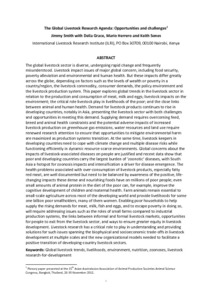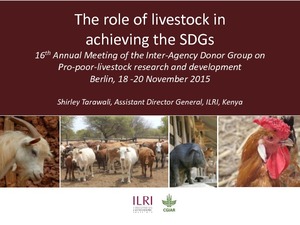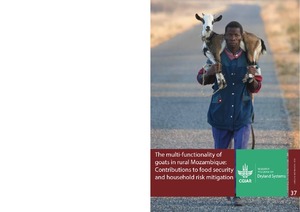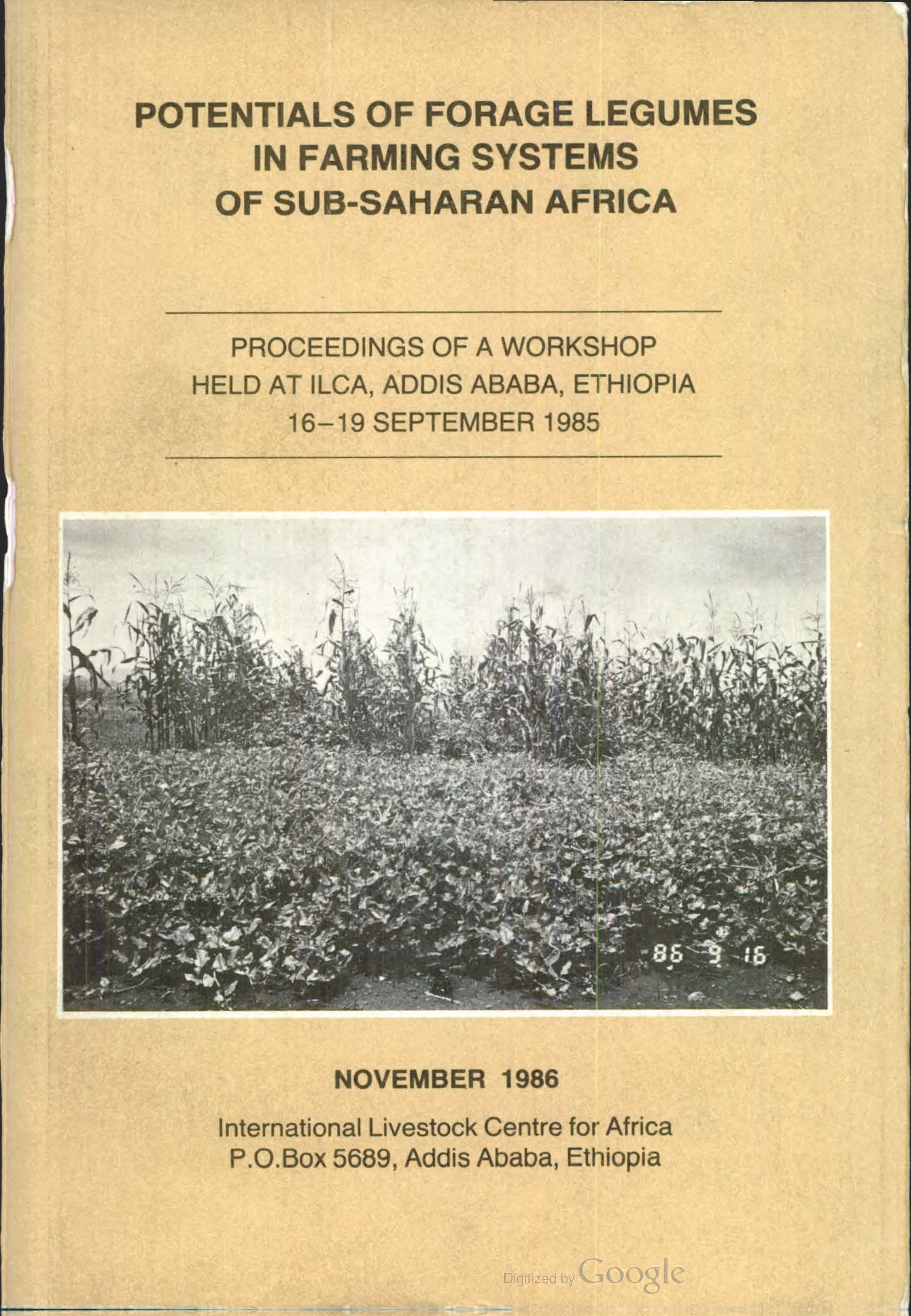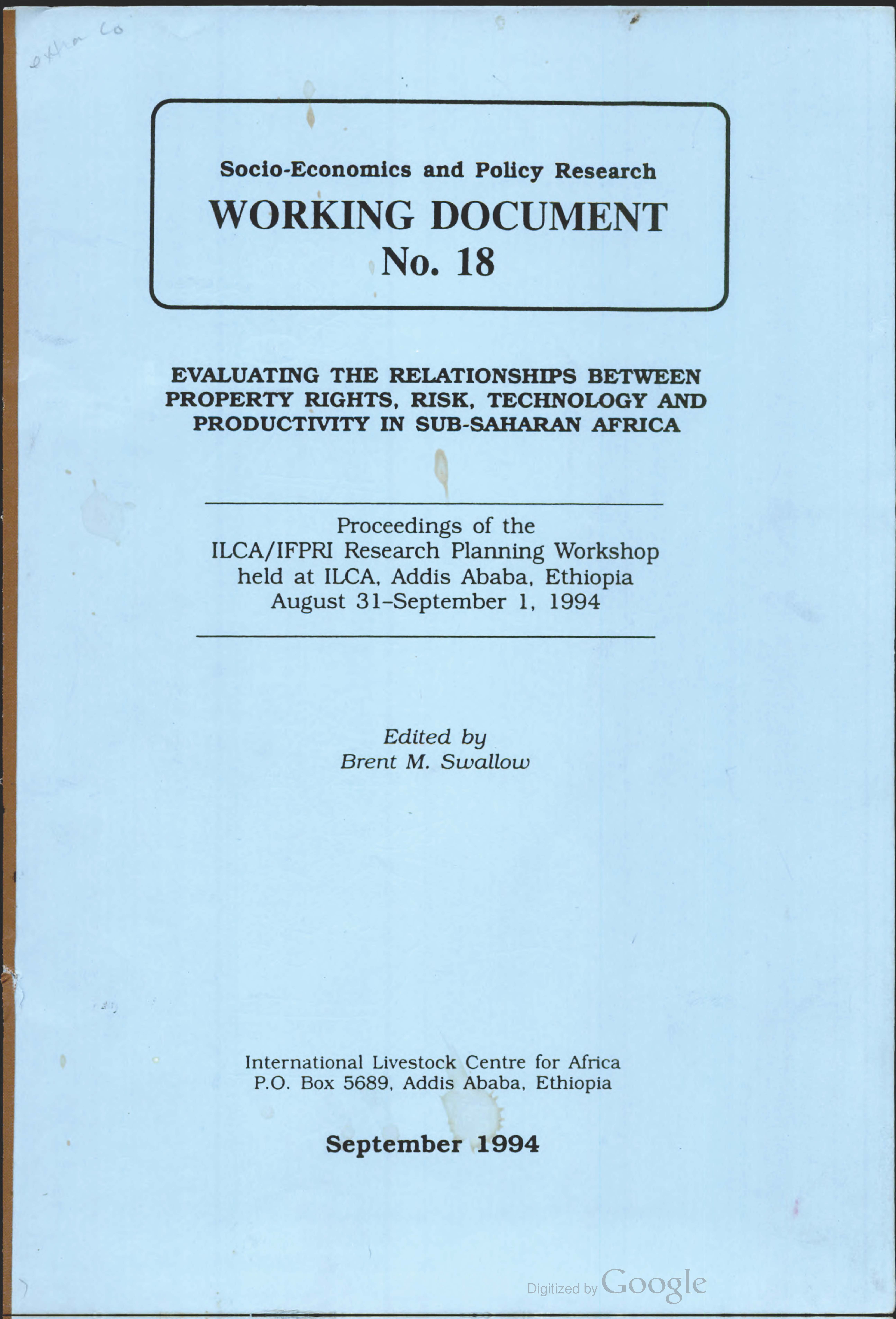The global livestock agenda: Opportunities and challenges
The global livestock sector is diverse, undergoing rapid change and frequently
misunderstood. Livestock impact issues of major global concern, including food security,
poverty alleviation and environmental and human health. But these impacts differ greatly
across the globe, depending on factors such as the levels of wealth or poverty in a
country/region, the livestock commodity, consumer demands, the policy environment and
the livestock production system. This paper explores global trends in the livestock sector in
The multi-functionality of goats in rural Mozambique: Contributions to food security and household risk mitigation
It is widely acknowledged that goats in developing countries fulfill multiple functions and can contribute to improved livelihoods of smallholders. The multi-functionality of goats in rural Mozambique however is fairly unknown. The objective of the paper is therefore to identify and create a deeper understanding of the multiple functions goats currently play in the smallholders sector in Mozambique. The paper takes a sociological approach by advancing the thinking that the functions of goats are socially and culturally constructed, and not ‘given’.
The performance of stylosanthes species in different production systems in Nigeria
Summarises the performance of three species of stylosanthes, viz, S. guianensis cvs Cook and Schofield, S. hamata cv. Verano and S. humilis under different production systems in Nigeria, such as in pure legume pastures, mixed pastures, with crops, in rangeland and under seed production.
The productivity of small ruminants in the Maasai pastoral system, Kajiado District, Kenya. An introduction to current research
Describes the research approach adopted by an interdisciplinary ILCA team to study a pastoralist production system, summarizing the methodology & results of research on small ruminants' productivity in the Maasai pastoral system, and outlining dif. features of current smallstock research in Kenya; w. an analysis of flock productivity, mortality, animal nutrition & behaviour at the Elangata Wuas group ranch.
Towards increased use of trypanotolerance: Current research and future directions. Proceedings of a workshop
This workshop was conceived in recognition of the fact that, over the years, a great deal of research has been conducted on trypanotolerance. With the advent of new and powerful means to identify markers and genes controlling traits of interest, and with the developments in animal breeding bringing greater speed in dissemination of desirable genotypes, there is increasing interest in trypanotolerance as a way forward in trypanosomiasis control.
Trade-offs and alternative livelihoods of the forest-dependent people in the Malinau research forest
The use of tritiated water in livestock research in Africa: Theory, application, methodology and potential errors of the technique
Presents a theoritical outline of the techniques in the use of tritiated water (HTO) which can be used to estimate total body water, body composition, water turnover, milk intake and feed intake. Highlights its potential errors and gives a comprehensive methodology for the use of tritiated water under field conditions.
Traditional strategies and adaptive resource use by crop-livestock producers in the Sahel
This presentation concerns the key property rights issues arising in the West African Semi-Arid Tropics (WASAT). The WASAT contains three main agro-climatic zones: Sahel (300–600 mm of annual rainfall falling in 2.5–4 months); Sudanian (600–900 mm, 4 to 6 month rainy season); and Guinean (900–1100 mm, 6–7 month rainy season). The author presented a conceptual framework to explain the responses that farmers in the WASAT region have adopted to deal with changes in their environment.


